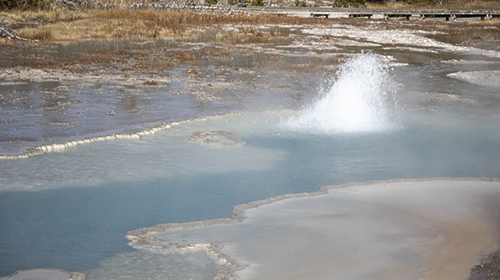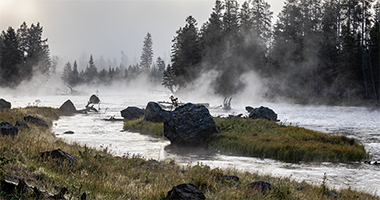Black Sand Basin

Black Sand Basin is a 1/2 mile north of the turnoff to Old Faithful on the west side of the road. Black Sand Basin is the home of Cliff Geyser, Spouter Geyser, Opalescent Pool, Rainbow Pool, Emerald Pool, and Sunset Lake.
Black Sand Basin is part of the Upper Geyser Basin, as is the Biscuit Basin. They comprise about two square miles of the 3,471 mi2 that make up Yellowstone NP.
Black Sand Basin's name refers to the tiny obsidian bits that make up the sand in the entire area.1
The trail at Black Sand Basin is only 0.5 miles long on a flat boardwalk. Walkers and wheelchairs can easily access the sites. There is a bench as you go to Emerald Pool.
Opalescent Pool originally started as a depression that runoff from Spouter Geyser started to fill, but over time, it has become its own beautiful named feature. The temperature is 93.56° F (34.2° C).

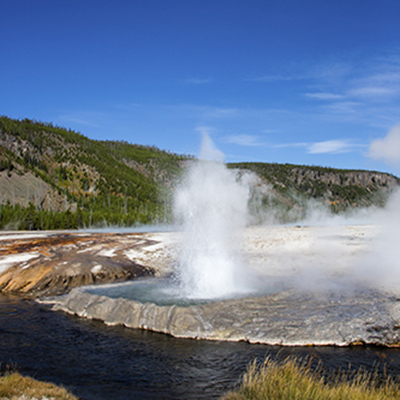
Cliff Geyser sets right on the edge of Iron Spring Creek, a small 5-mile creek that runs from the south going north to Biscuit Basin. Did you notice it runs north? Most of us are used to rivers, streams, and creeks running south, so what is up here? If you look at a Yellowstone map, you will see that Iron Spring Creek is north of the continental divide. Being north of the divide means the water flows towards the Pacific Ocean. South of the divide flows south towards the Gulf or the Atlantic Ocean.
Cliff Geyser sets right at the edge of the creek, so you are excused if you think the water for its eruptions comes from the creek. Sorry, you would be wrong because the creek water is not hot enough to support an eruption. Cliff Geyser. Riverside Geyser, and any of the features that set close to running water have their own separate plumbing system that has nothing to do with the water flowing by. The water must be very hot for a geyser to erupt, and mountain streams don't meet that qualification.
Rainbow Pool and Sunset Lake are smaller pools than the better-known Grand Prismatic Spring, but they both can give you a water rainbow of colors due to the thermophiles at their edges. As you see here, the Rainbow Pool is blue in the center. It does not support bacteria, known as thermophiles, due to its temperature. What you are seeing is the reflection of light. As the temperature cools, as the water moves away from the hottest areas that prevent bacteria growth, bacteria can start growing in the cooler, but still hot, water. You will normally see lighter colors, white, yellow, and green, moving towards light than darker browns.
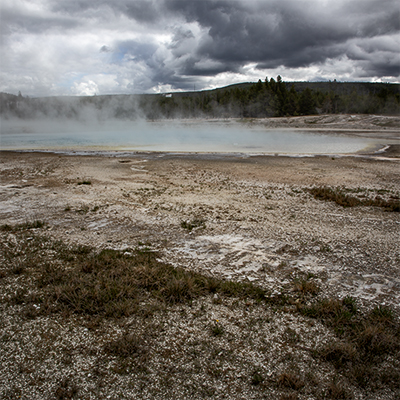
360-degree Views of Black Sand Basin
Click the images to see the basin differently. Clicking on the pictures will take you to another page to see a 360-degree image of the geyser basin. It will start moving automatically, but feel free to drag the image in ANY direction. Click the information button for information. Use your mouse scroll wheel to move in and out some in the image. To return to this page, use the back page button on your browser.

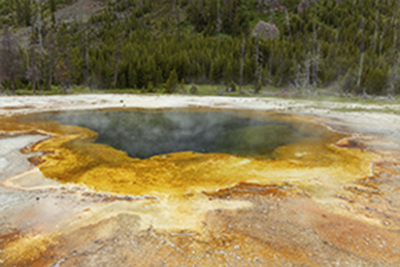

A larger view of the beautiful Emerald Pool. It has lost some of its vibrant colors as the pool has cooled over time.
1Whittlesey, L. H. (2006). Yellowstone Place Names. Gardiner, MT: Wonderland Publishing Company. Page 53.


